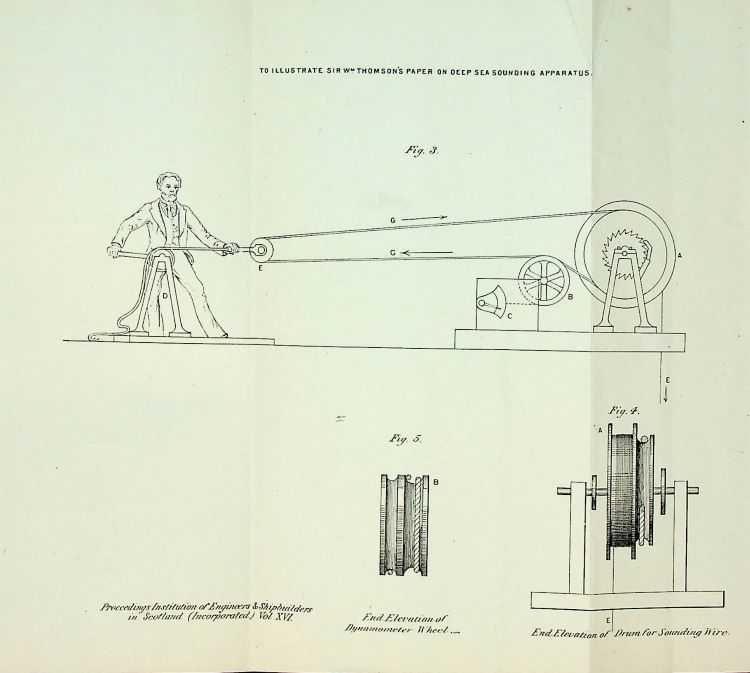
Archives and Modern Manuscripts Image of the Month: William Thomson’s Submarine Cable
This summer marks the 200th anniversary of the birth of William Thomson, 1st Baron Kelvin (1824-1907). Lord Kelvin gave his name, the ‘kelvin’, to the base unit of measurement for temperature in the Kelvin Scale, which measures from absolute zero. Thomson’s career at the University of Glasgow was long and varied, examining both practical and theoretical questions.
One of Thomson’s most significant engineering achievements involved his participation in the transatlantic telegraph project. Thomson applied his experimental work on electrical apparatus to the attempt to lay telegraph cables under the Atlantic Ocean that would allow almost instant communication between Europe and North America for the first time. Although the first cable failed, a second attempt in 1865 succeeded in laying a cable that spanned the entire Atlantic Ocean,; this cable was connected to the sensitive mirror galvanometer designed by Thomson and allowed messages to be sent using Morse code.
This image is a plate from a series of papers Thomson delivered to the Institution of Engineers and Shipbuilders in Scotland on 13 and 18 March 1873, titled ‘On Signalling through Submarine Cables and on the Rope Dynamometer’. It depicts a rather jaunty sailor operating the mechanism to unwind a cable and gently lay it on the ocean floor. The paper describes Thomson’s own experiences on board one of the vessels that made use of this apparatus; he states that ‘the sailors would not believe that the bottom had been reached until the sinker was brought on board with its brass tube filled with fine oaze [sic]”.1 Although only one operator is depicted in the image, Thomson clarifies in his talk that it would have required at least two people to operate the rope dynamometer in the depths of the ocean.
1 – Thomson, William, On Signalling through Submarine Cbles and on the Rope Dynamometer (William Munro, 1904), p. 10.

